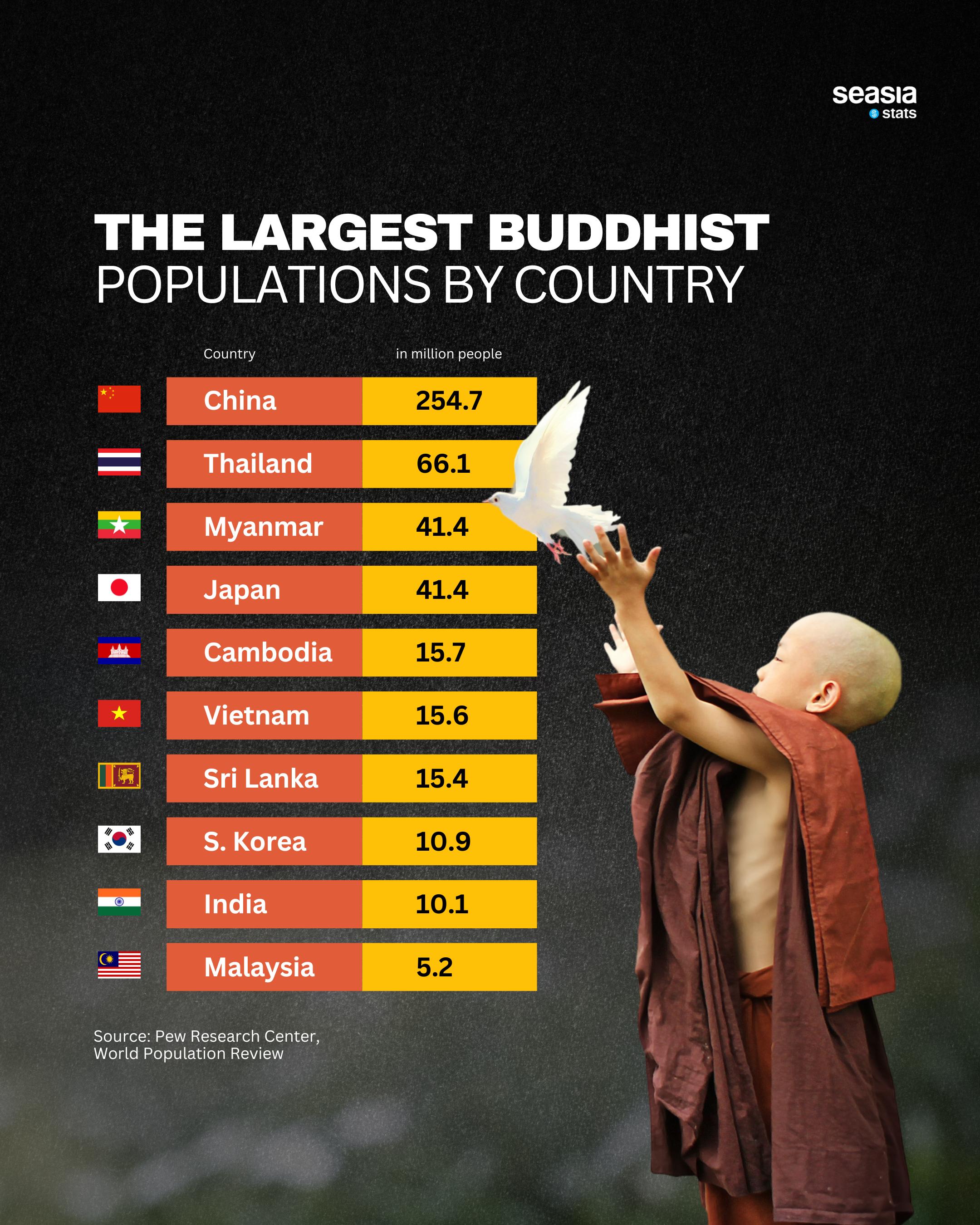Buddhism may have originated in ancient India over 2,500 years ago, but today its largest communities are spread across East and Southeast Asia.
As of the latest data compiled by Pew Research Center and World Population Review, the religion remains one of the most practiced belief systems globally, with hundreds of millions of followers who maintain centuries-old traditions in modern times.

China Leads by a Massive Margin
No country comes close to China when it comes to Buddhist population. With an estimated 254.7 million followers, China alone accounts for nearly half of the global Buddhist population.
While Buddhism in China has adapted to modern cultural and political shifts, its historical roots go back to the Han Dynasty, and the religion continues to influence philosophy, art, and festivals across the country.
Despite being a secular state, China is home to some of the most iconic Buddhist sites in the world from the Leshan Giant Buddha to the ancient caves of Dunhuang. The numbers, however, may not fully reflect active religious observance, as many Chinese Buddhists may identify culturally or philosophically with Buddhism rather than through regular temple attendance.
Southeast Asia: A Living Heartland of Buddhism
Outside of China, Southeast Asia stands as one of the most vibrant centers of Buddhist life. Thailand ranks second on the list with 66.1 million Buddhists, representing more than 90% of its national population. Here, Buddhism is deeply embedded in daily life, from monks receiving alms at sunrise to major festivals like Visakha Bucha Day drawing nationwide participation.
Myanmar follows closely with 41.4 million, a figure nearly tied with Japan. The country’s Theravāda tradition shapes not only religious rituals but also social values and national identity.
Cambodia and Viet Nam also make the list with 15.7 and 15.6 million Buddhists respectively, demonstrating how Buddhism in the region often functions as a guiding social and ethical force.
East Asia: Tradition Meets Modernity
Japan, with 41.4 million Buddhists, presents a fascinating blend of Shinto and Buddhist practice. Many Japanese people identify with both traditions, and it is common for families to observe Buddhist funeral rites while celebrating Shinto festivals.
Although temple visits have declined among younger generations, Buddhist temples still serve as important cultural and spiritual centers.
South Korea, with a Buddhist population of 10.9 million, offers yet another unique case. Here, modern urban life intersects with ancient temples perched on mountainsides. The annual Buddha's Birthday celebration lights up cities with lanterns, while temples like Bulguksa remain UNESCO World Heritage icons.
India: The Birthplace, Not the Biggest
India, where Siddhartha Gautama, the Buddha was born, today ranks lower on the list with 10.1 million Buddhists. This is largely due to historical shifts where Buddhism gradually declined in its birthplace, supplanted by other religious traditions over the centuries.
Yet, India’s Buddhist community has seen resurgence in certain regions, particularly among Dalit communities inspired by B. R. Ambedkar’s 20th-century Dalit Buddhist movement. Sites like Bodh Gaya continue to attract pilgrims from around the world, keeping the connection between India and Buddhism alive.
Malaysia: Small But Significant
Rounding out the top ten is Malaysia, with 5.2 million Buddhists. Though a multi-religious country, Malaysia’s Chinese and Thai communities help sustain Buddhist traditions, especially in states like Penang and Kelantan.
Colorful temples and cultural festivals continue to thrive, particularly in urban centers and heritage zones.
More Than Just Numbers
While population figures offer one lens to view global Buddhism, they don’t tell the whole story. Buddhism continues to evolve, quietly influencing everything from mindfulness practices in the West to sustainable living philosophies.
Its presence across such diverse cultures and political systems speaks to its adaptability and enduring relevance.
From mountaintop monasteries in Bhutan to busy Bangkok intersections where golden temples sit beside skyscrapers, Buddhism remains a living, breathing force. The numbers show where it lives, but the daily rituals, chants, and silences are where it truly thrives.


















